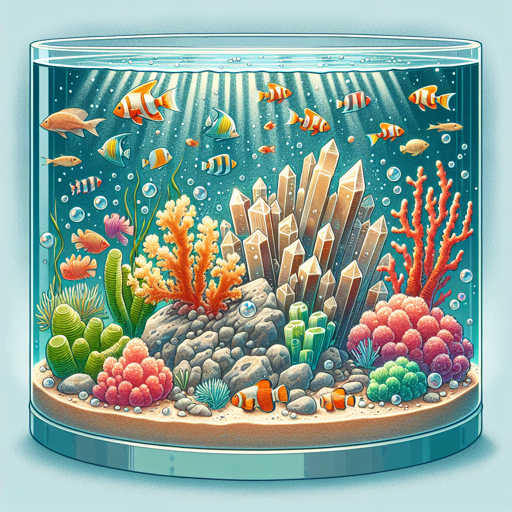Aragonite: The Secret Ingredient of Healthy Aquariums
Exploring why aragonite sand is the favored substrate for marine aquariums and its crucial role in maintaining optimal water chemistry.

Introduction
Aquarium enthusiasts and marine life admirers are always on a quest to create a balanced and harmonious environment for their aquatic residents. One pivotal component that often goes unnoticed is the substrate used at the bottom of the tanks. Aragonite, a naturally occurring form of calcium carbonate, has gained popularity in recent years as the preferred substrate for marine aquariums. But what makes aragonite so special?
Aragonite and Its Unique Properties
Aragonite is a crystal form of calcium carbonate (CaCO3), sharing the same chemical composition with limestone and marble but differing in crystal structure. This mineral is admired for its distinct orthorhombic crystal system, forming prismatic or acicular (needle-like) crystals, often radiating in star-shaped clusters.
One distinguishing feature of aragonite is its solubility in water. Unlike other forms of calcium carbonate, aragonite can readily dissolve in water, especially in colder temperatures. This property is of great value in aquariums, where it helps maintain the necessary levels of calcium and carbonate hardness.
The Role of Aragonite in Marine Aquariums
Aragonite plays a crucial role in preserving the water chemistry of a marine aquarium. It works as a natural buffer, maintaining a stable pH by preventing drastic changes in acidity or alkalinity. This stability is vital for the health of the marine organisms, as even slight fluctuations can cause stress or even fatality.
Moreover, aragonite serves as an excellent source of essential trace elements. As it dissolves, it releases calcium, strontium, magnesium, and other trace elements into the water, crucial for the growth and health of corals and other invertebrates.
The Benefits of Aragonite Over Other Substrates
Various substrates can be used in aquariums, such as sand, gravel, pebbles, and even synthetic materials. However, none match the multifaceted benefits offered by aragonite.
| Substrate | pH Buffering | Trace Element Supply | Aesthetic Appeal |
|---|---|---|---|
| Aragonite | Yes | Yes | High |
| Sand | No | No | Medium |
| Gravel | No | No | Low |
| Pebbles | No | No | Low |
| Synthetic | No | No | Varies |
As depicted in the table above, aragonite outshines other substrates in providing necessary pH buffering and trace element supply while also enhancing the aesthetic appeal of the aquarium with its unique crystal forms and textures.
“Aragonite is not just a substrate; it’s a lifeline for the marine organisms in your aquarium.” - Anonymous Marine Biologist
Conclusion
Aragonite, with its unique properties and benefits, is indeed a hidden gem in the world of marine aquariums. It not only creates an aesthetically pleasing environment but also ensures the well-being of the aquarium’s inhabitants by maintaining the water’s optimal chemistry. Next time you set up a marine aquarium, remember that the secret to a thriving aquatic environment might just lie in the sand beneath.
For more information on aragonite and its uses in aquariums, check out this resource.